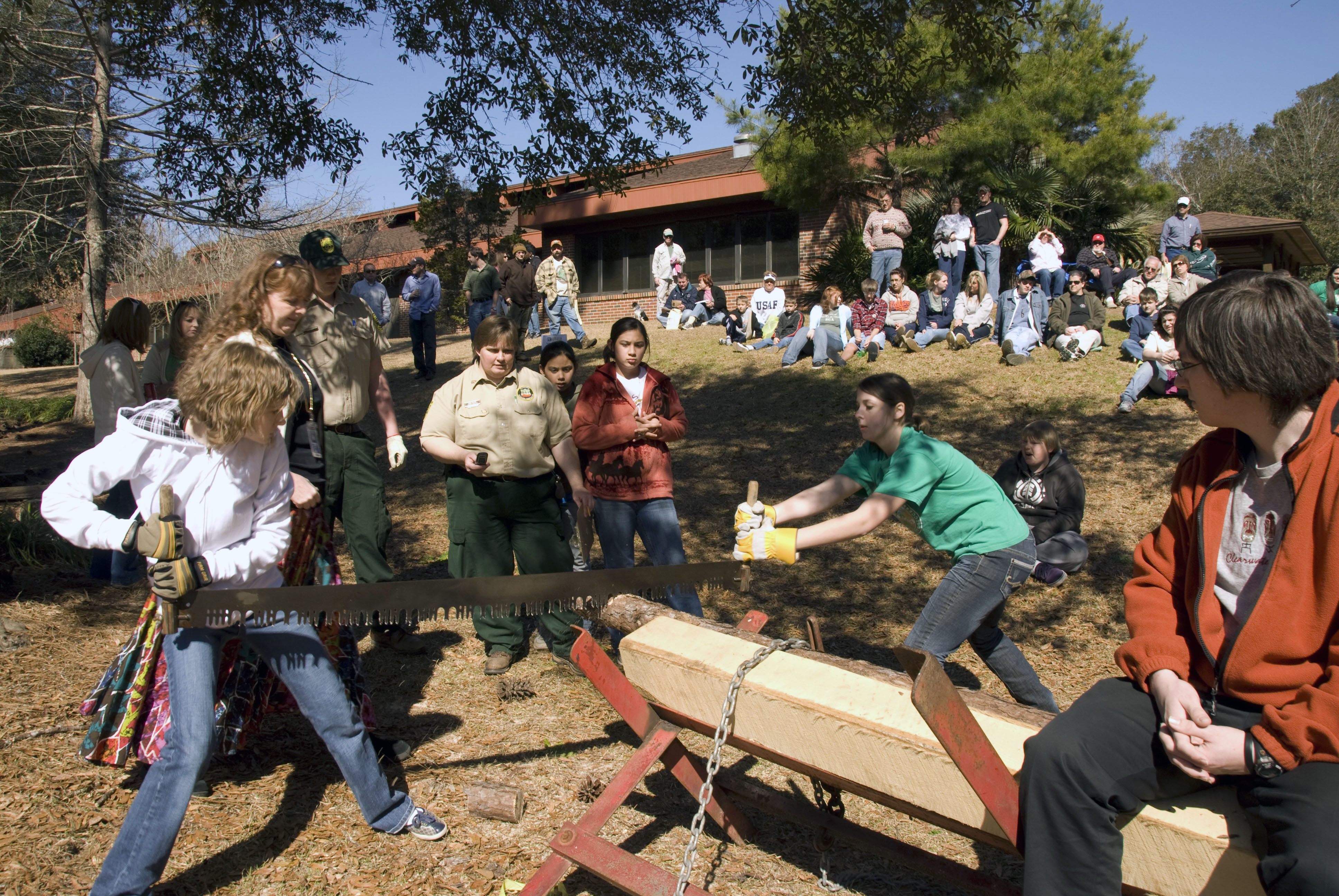Nick Alford–The Corsair
PJC held the 22nd annual Northwest Florida Forestry Conclave and Lumberjack Festival March 6 on its Milton campus. The festival hosted an assortment of events, including the Axe Throw and the Pulpwood Toss.
 The festivities started out at 8 a.m. with a Pole Fell contest, in which competitors guess which direction a tree will fall before chopping it down with an axe. The rest of the day was filled with other brawny lumberjack competitions accompanied by live music, food and art displays enjoyed by the almost 2000 people that attended.
The festivities started out at 8 a.m. with a Pole Fell contest, in which competitors guess which direction a tree will fall before chopping it down with an axe. The rest of the day was filled with other brawny lumberjack competitions accompanied by live music, food and art displays enjoyed by the almost 2000 people that attended.
Exhibits at the festival included The Wildlife Sanctuary of Northwest Florida, who had an exhibit of live owls and vultures rescued in the area. In addition, wood sculptor Jeff Wheelock showed his skills at the event by a demonstration of chainsaw sculpting. There were also displays by the Florida Park Police and Florida Division of Forestry.
Although PJC is discontinuing its Forestry Technologies program this year, the event itself will continue to take place as it has for the last 22 years. According to Conrad Brewer, recently retired coordinator for the PJC Forestry Program, it was discontinued because of low attendance and general lack of demand.
“There are a number of mills that are no longer in business.” said Brewer “There are fewer places for employment in the forestry profession in this area.”
Currently, less than 5 people are enrolled in the forestry program at PJC this year, and they will be allowed to finish out the end of this fall semester. The program has been a part of PJC’s curriculum at Milton since the campus opened in 1985. At that time, there were at least seven forestry mills in the area around Northwest Florida.
“We do still have two paper mills in Cantonment and Brewton,” said Brewer, “But the construction lumber industry is at the bottom … no one is building homes, so lumber is in low demand.”
Lumber Prices in the United States have peaked this year as a result of short supply. When the housing market dipped early this decade, lumber production in the U.S. dropped an estimated 45% between 2005 and 2009, according to U.S. Census Bureau industrial report.

